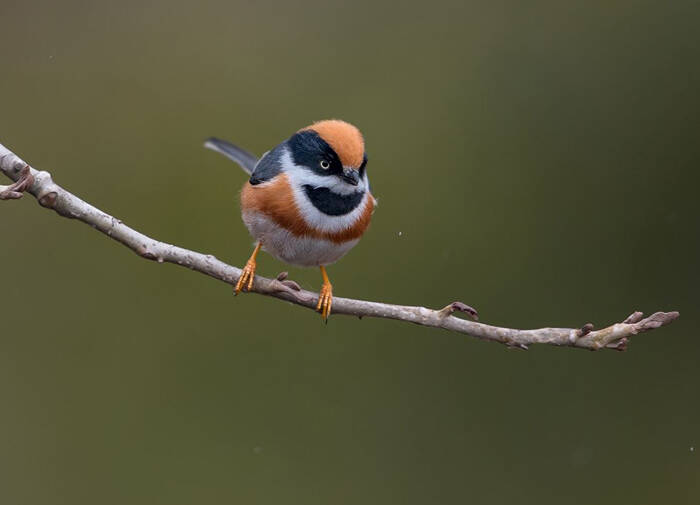Parus davidi
IUCN
LCBasic Information
Scientific classification
- name:Parus davidi
- Scientific Name:Parus davidi,Rusty-breasted Tit
- Outline:Songbird
- Family:passerines paridae tit
Vital signs
- length:11-12cm
- Weight:About 12g
- lifetime:5-10years
Feature
Black head, white cheeks, olive brown upper body; chestnut brown belly
Distribution and Habitat
The distribution is limited to my country, and it is one of the endemic birds in my country. The distribution area is relatively narrow. So far, it has only been found in southwestern Gansu, Taibai Mountain in Qinling Mountains of Shaanxi, Badong in western Hubei, Mount Emei, Mount Ebian, Mount Erlang, Kangding, Baoxing and Meigu in Sichuan (resident bird), with no subspecies differentiation.
The red-bellied tit is an alpine forest bird, mainly inhabiting alpine coniferous and bamboo forests above 2,000 meters above sea level.
Appearance
Male and female plumage is similar. The forehead, top of the head, nape to the back of the neck are bright black, the cheeks from the eyes to the ear feathers and the front of the neck are white, and the back of the neck is light brown. The back, shoulders, waist and tail are olive brown, the tail feathers are dark brown, the outer feathers are brown, the wing coverts are the same as the back, the flight feathers are dark brown, except for the first and second flight feathers, the outer feathers of the remaining flight feathers are olive brown. The chin, throat and upper chest are black, the lower chest, abdomen to the tail coverts are brown chestnut or chestnut red, and the armpits and underwing coverts are light brown.
Juveniles are similar to adults, but the black part is dull and not as bright as adults. The white spot on the cheek is yellow.
Iris is blue, the bill is black, and the feet are lead black
Details
Rusty-breasted Tit, a small bird with no subspecies.

Except for the breeding season when they move in pairs, red-breasted tits usually move in small groups of a few to more than 10 in other seasons. They are mostly found among the lower branches and leaves of the canopy and in the bamboo and shrubs under the forest. Sometimes they also move and forage on the ground.
Listed in the "IUCN Red List of Threatened Species": Least Concern (LC), assessed in 2012.
Listed in the "List of Terrestrial Wildlife with Important Economic and Scientific Research Value under State Protection" issued by the China Forestry Administration on August 1, 2000. (Note: Item 605 Red-bellied Tit)
Listed in China's "National Key Protected Wildlife List" (February 5, 2021) Level 2.
Protect wildlife and eliminate game.
Maintaining ecological balance is everyone's responsibility!








